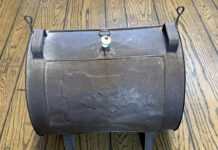“Chill in the air, calves get fluffy hair.”
Sounds like something from an old almanac, but I just made it up. While some calves seemingly do get a long and fluffy hair coat overnight, the more important cue of that chill is for calf feeders to feed baby calves more.
Good calf feeders know, however, they better be feeding their calves more long before their hair gets fluffy — even on these seemingly “warm” days we have frequently had this winter.
The fact is, once the temp drops below just 60 F, a baby calf needs additional nutrients to simply meet body maintenance requirements, let alone gain weight.
Adjust rations
How do we need to adjust nutrition for calves less than three weeks old in cold weather? Using the Nutrient Requirements of Dairy Cattle program, let’s look at maintenance requirements first.
Using a 90-pound calf (Holstein heifer) and a 60-pound calf (Jersey heifer) as examples, we see a critical need for additional milk or milk replacer occurs as outdoor temps drop toward freezing. (See Table 1.)
(Column continues below chart.)
These pounds of dry matter (DM) are the milk replacer powder, or equivalent amounts of fresh milk (one, 2-quart bottle of milk contains about a half pound of dry matter).
Traditional milk replacer feeding recommendations of one pound of DM per day, (usually fed as two bottles with 8 ounces of powder each,) will allow a calf to gain a half pound/day in warm weather. But at 32 degrees, both calves need 50 percent more milk replacer DM to meet maintenance requirements (neither gaining nor loosing weight).
Additional milk replacer (MR) must be fed beyond that if we expect the calf to grow.
No feed, no gain
How must nutrition change in cold weather? Quite simply, the calf has to eat more. If she isn’t offered nutrients, she simply won’t get them.
In calves less than three weeks old, starter consumption is minimal and will not provide significant nutrients. Even though it doesn’t provide significant nutrients, the consumption is important because digestion of those mouthfuls of starter initiate rumen development.
Keeping it simple
Getting calves fed well day in and day out, especially if multiple people are doing the feeding, is an important factor in overall calf health. Changing amounts fed each day depending on the temperature is both impractical — and not likely to happen.
Set a goal for rate of gain. If we feed for 1.5 pounds of gain per day for a Holstein at 60 degrees F, our potential rate of gain will drop to 1 pound/day in extreme cold. If we feed for 1 pound of gain, we will drop to no gain in extremely cold conditions.
We never, ever, want to drop below maintenance requirements. Calves will lose weight and their immune system will be challenged.
For additional information on feeding calves in cold weather including a discussion on feeding whole milk, see Feeding Newborn Calves to Thrive in Cold Weather in Volume 9, Issue 4 of the Buckeye Dairy News at http://dairy.osu.edu.













